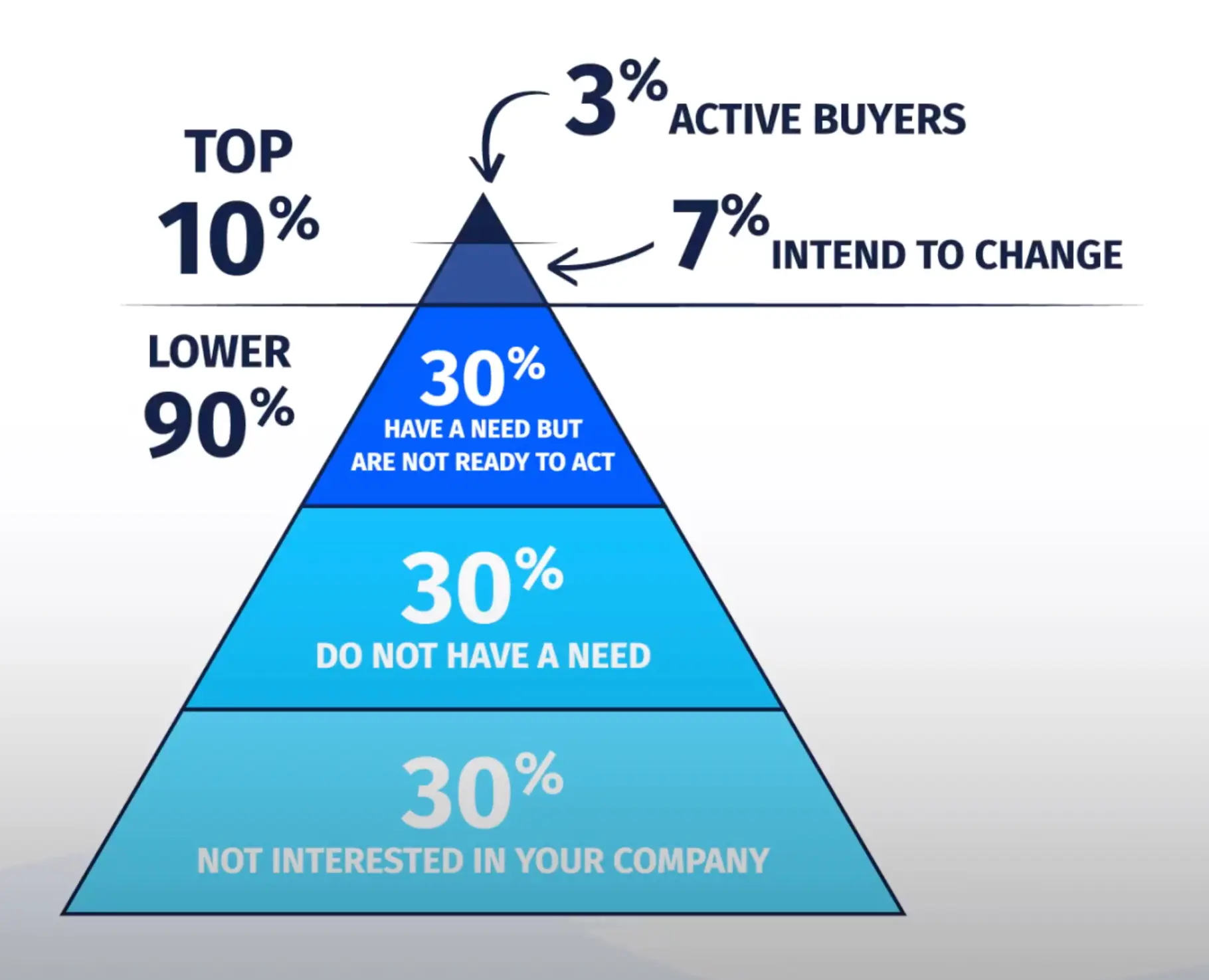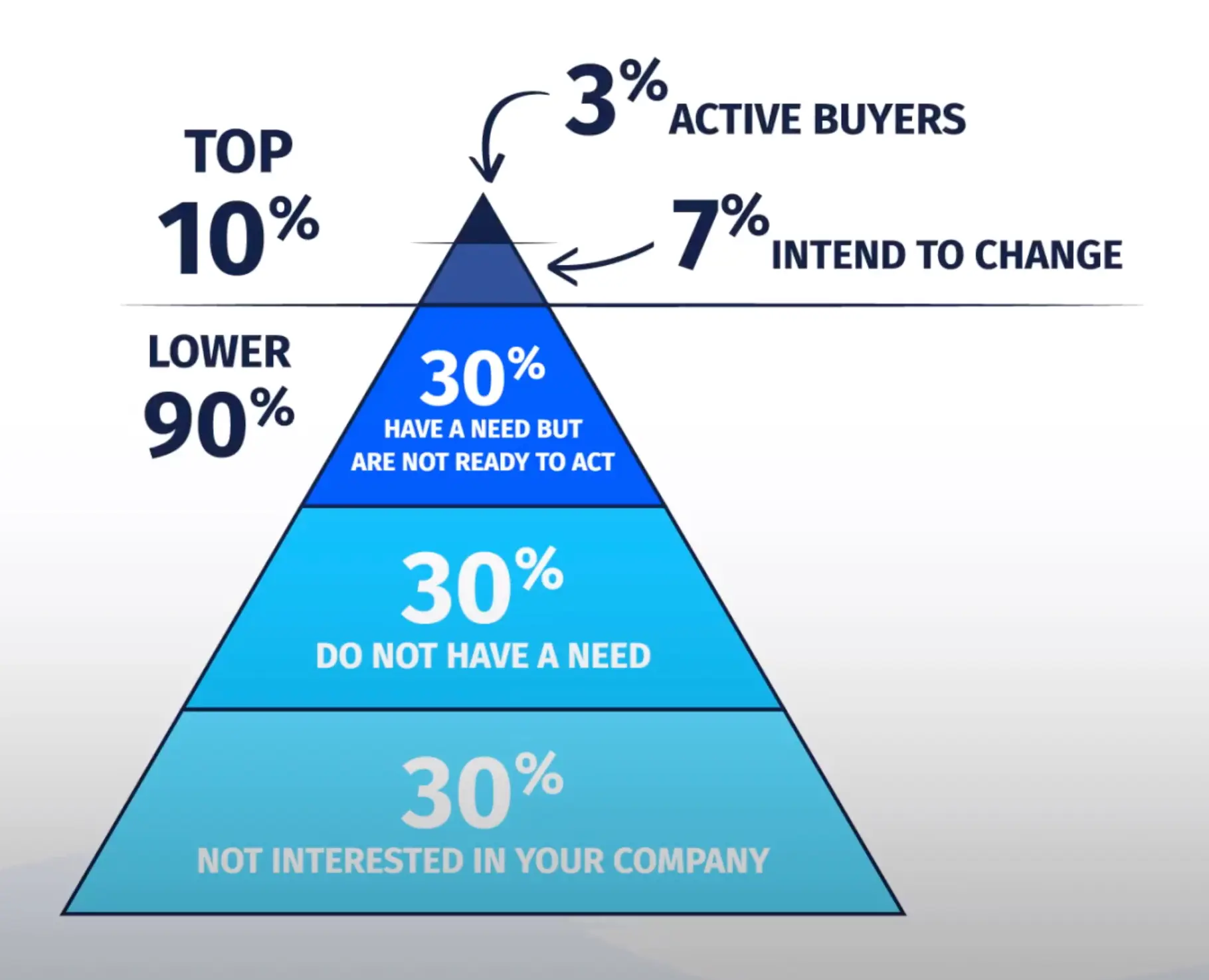Here’s a situation many marketing teams can relate to…
You’ve launched a new lead generation campaign and you’re starting to see great results.
The sales team is happy with lead quality and your Cost Per Lead is looking good.
There’s only one thing left to do.
“Let’s increase the spend to increase our lead volume!”.

And of course, you know what happens next…
While you see an early increase in lead volume, your Cost Per Lead continues to rise as you increase the budget.
Pretty soon, you’re seeing no extra leads for the extra budget, and your Cost Per Lead is out of control.

So what’s going on?
In this blog, we look at why your Cost Per Lead increases when you try to scale. We also outline the 4 techniques we use to scale lead volume, not Cost Per Lead, for our clients.
So, What’s Happening When You Try To Scale?
Let’s take a deeper dive into what’s going on using this example.
Let’s say you’re a new home builder with a currently successful Facebook Ad Campaign.
You’ve got your offer, audience targeting and ad creative all dialled in.
You’re generating 10 leads per day with a Cost per Lead that’s in line with your targets.
Your sales team want 30 leads per day and you have the approval to increase your budget.
As you start to increase your spend, you see a corresponding increase in lead volume until you hit 20 leads per day.
Yet as you continue to increase your spend, you see no extra leads as a result.
No matter how much you increase the spend, you can’t seem to crack the 20 leads per day mark.
So what’s going on?
In short, you’ve hit the point of diminishing returns for your offer, targeting and ad creative.

It doesn’t matter how much extra spend you push to your campaign. You’ve hit a saturation point for those who are ready to take action.
This point will vary depending on your targeting, offer and ad creative.
If you’re running a sales lead campaign, it likely represents those 3% of prospects shown in the graph below.

These are the “ready to buy” prospects looking to pull the trigger in your category.
So now what?
Are your campaigns limited to only 20 leads per day forever?
Of course not.
However, your approach to scaling needs to be more sophisticated than increasing your budget.
Here are 4 techniques we use to help our clients scale their lead volume without scaling their Cost Per Lead.
1. Expand Your Audience Targeting
This first technique is the most straightforward to put in place.
If your targeting is topping out, expand the size of your audience to increase your pool of prospects.
If you have a presence in multiple markets, this could be as simple as expanding the location targeting of your campaign.
E.g if you’re targeting Sydney, add Brisbane and Melbourne to increase your audience size.
However, for most campaigns, your location targeting will need to remain consistent.
In these instances, test expanding your targeting by increasing the size of your lookalike audiences.
For example, if you’ve been using a 1% lookalike audience of converted customers, test a 2% or 3% lookalike using the same audience.
This will allow you to double or triple your audience size without a significant departure from the original source audience.
If you’ve been relying on interest audiences, test selecting “Interest Expansion”.
This will allow Facebook to move beyond your current interest parameters if they believe they can capture a conversion.
A word of warning – beware of the impact that expanding your audience may have on lead quality. Ensure that you’re evaluating your campaigns based on Cost Per Sale, not just Cost Per Lead.
For more on how to do this, check out our blog post here on Sales Focused Optimisation.
2. Expand Your Creative Angles
Relying on a single creative angle is often one of the reasons why a campaign won’t scale.
The copy, images and videos you use to appeal to one audience segment may fail to register with another.
If your current creative angle appeals to price-focused buyers, you may be ignoring those prioritising service as their primary buying criteria.
To scale your campaigns, you need to be testing new ad creative angles that appeal to different audience segments.
Here are some points to get you started:
- Use price offers or financial incentives to generate responses from those who are obtaining quotes within your category.
- Leverage social proof and third party endorsements to appeal to those for whom trust in the service provider is more important than price. This is particularly important when targeting more affluent audiences.
- Use scarcity for immediate, short term action but do so with caution. We all have those examples of brands that seem to always be on sale!
3. Expand Your Offer Selection
Like your ad creative approach, your campaign offer will appeal to some audience segments more than others.
As you scale your campaigns, introduce extra campaign offers to appeal to more audience segments.
If you’re currently focused on a price-based offer, try offers that include ongoing monitoring or maintenance services. For many buyers, they may be looking for ways to reduce the ongoing costs associated with a service rather than the upfront cost.
If you’re in a competitive market, test campaign offers that focus on guaranteed installation times or product performance. Many affluent homeowners are willing to pay more upfront for certainty around their use of a product or service.
If you’re currently focusing your campaigns on an entry-level package, test offers focused on more premium, higher-priced packages. While you may see fewer leads from this audience, a higher conversion rate is likely to lead to a lower Cost Per Sale or higher margin compared to your entry-level packages.
4. Move Further Up The Funnel
Finally, if you’ve exhausted your use of the 3 techniques above, it may be time to move further up the funnel.
This brings us back to the graph below showing that only 3% of the market are ready to buy at any given time.

To scale past this point, you’ll need to complement your Sales Qualified Lead campaigns with Marketing Qualified Lead campaigns.
Moving further up the funnel means that you can target those who are solution aware or problem aware, thus expanding your pool of prospective customers.
It is critical to remember that these “leads” are not sales leads. They will need nurturing and time before they are ready to buy.
However, by holding their hand as they progress through their buying journey, you can position yourself as their #1 choice in your category.
Ultimately, this will allow you to scale your campaigns beyond that 3% over time.
Wrapping It All Up.
The easiest, most obvious way to scale a campaign is by adding extra budget.
But, to continue to scale your campaigns without scaling your Cost Per Lead, you need to evolve your campaign approach.
These are the 4 techniques that we use to help our clients increase lead volume, not their Cost Per Leads.
- Expand Your Audience Targeting
- Expand Your Ad Creative Angles
- Expand Your Offer Selection
- Move Further Up The Funnel

